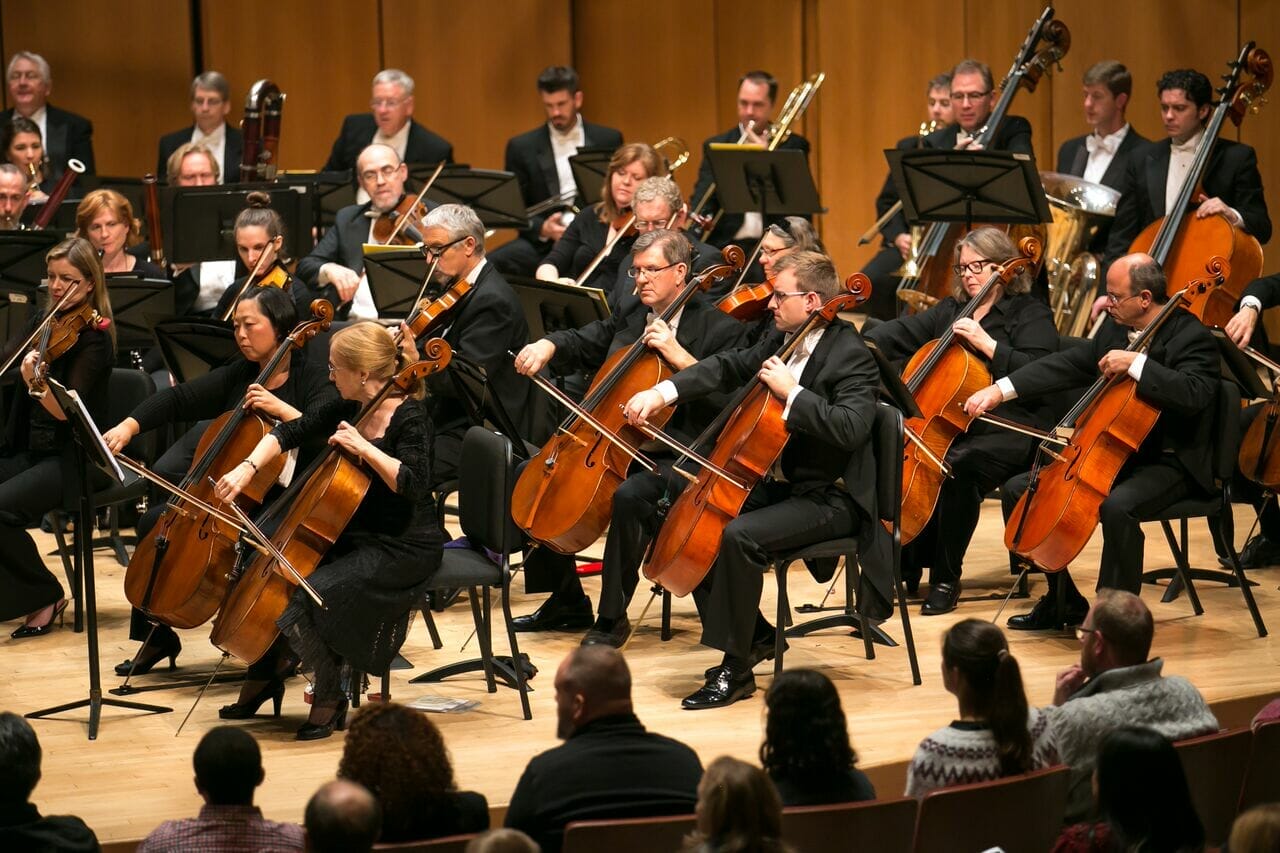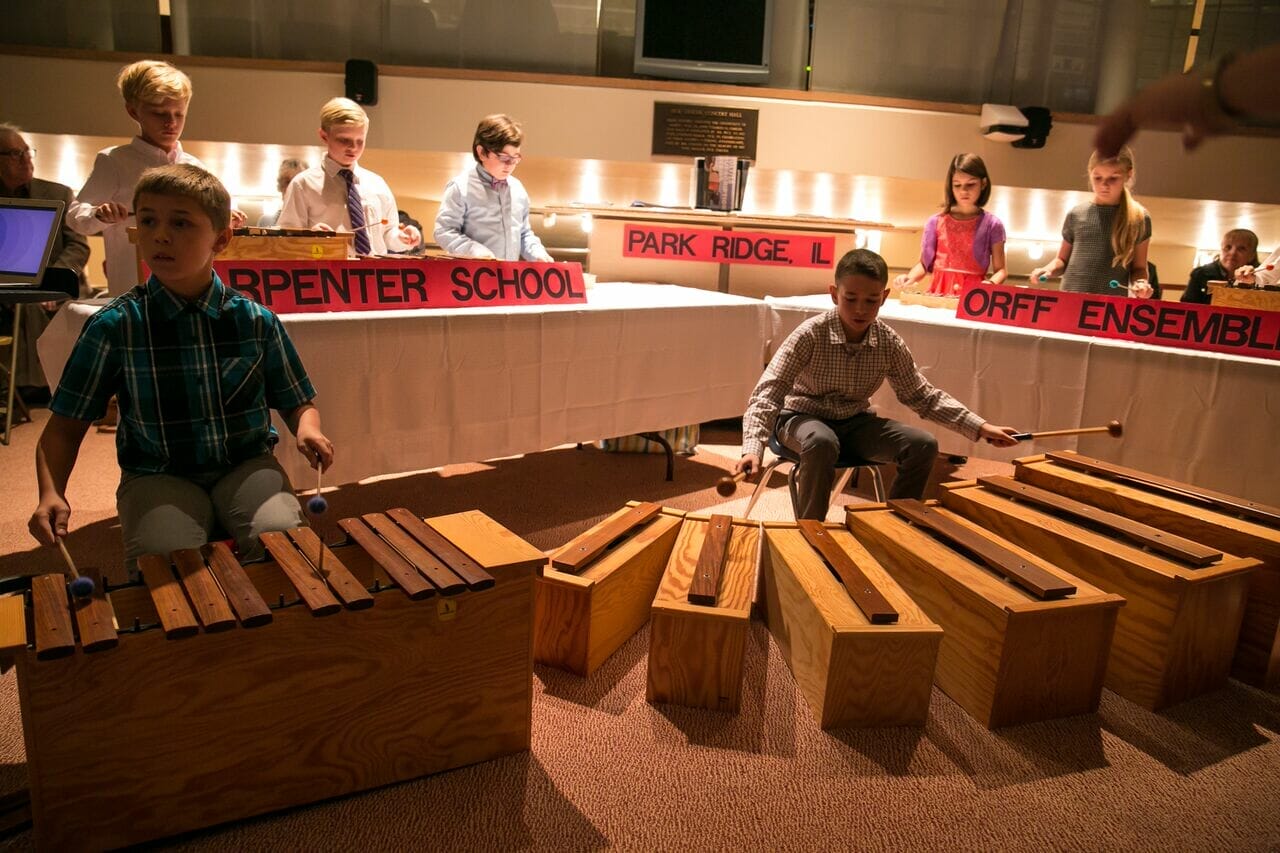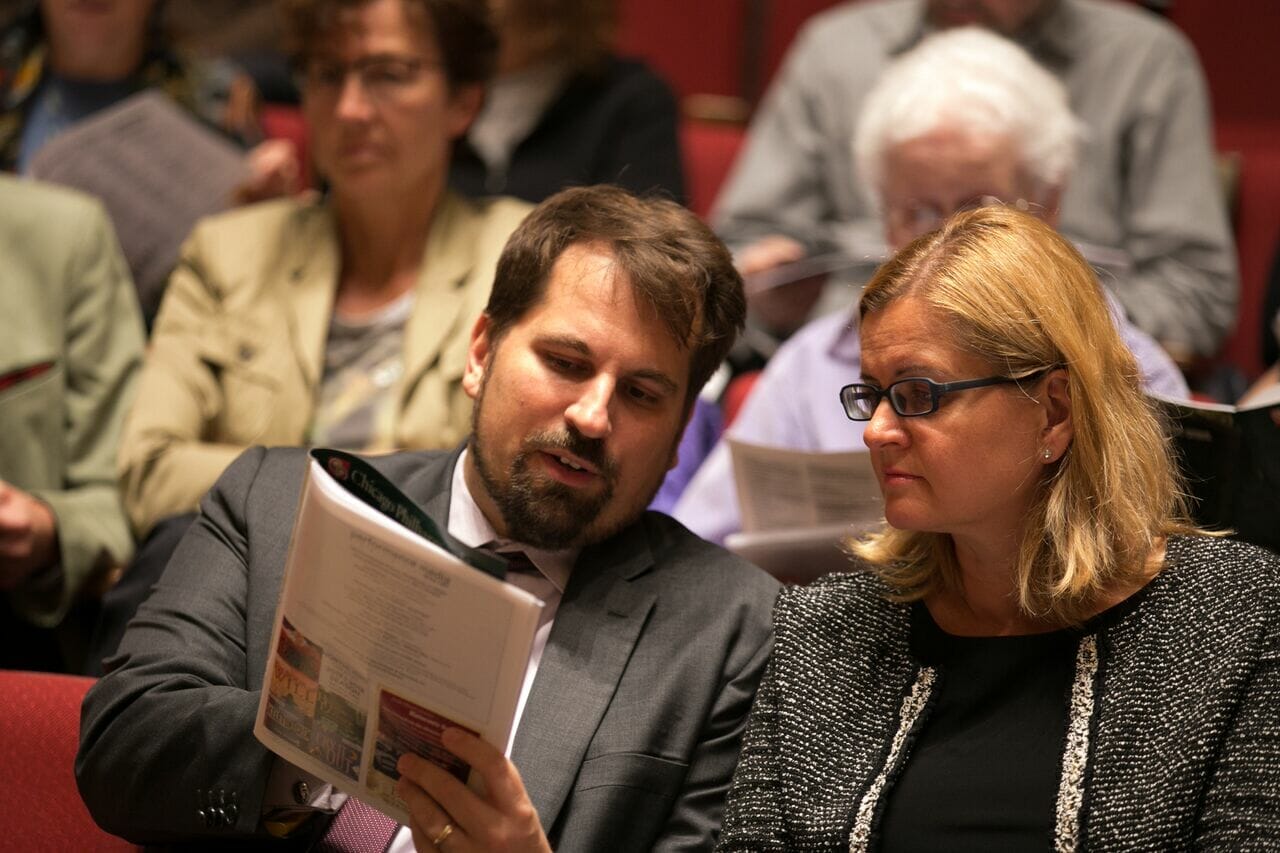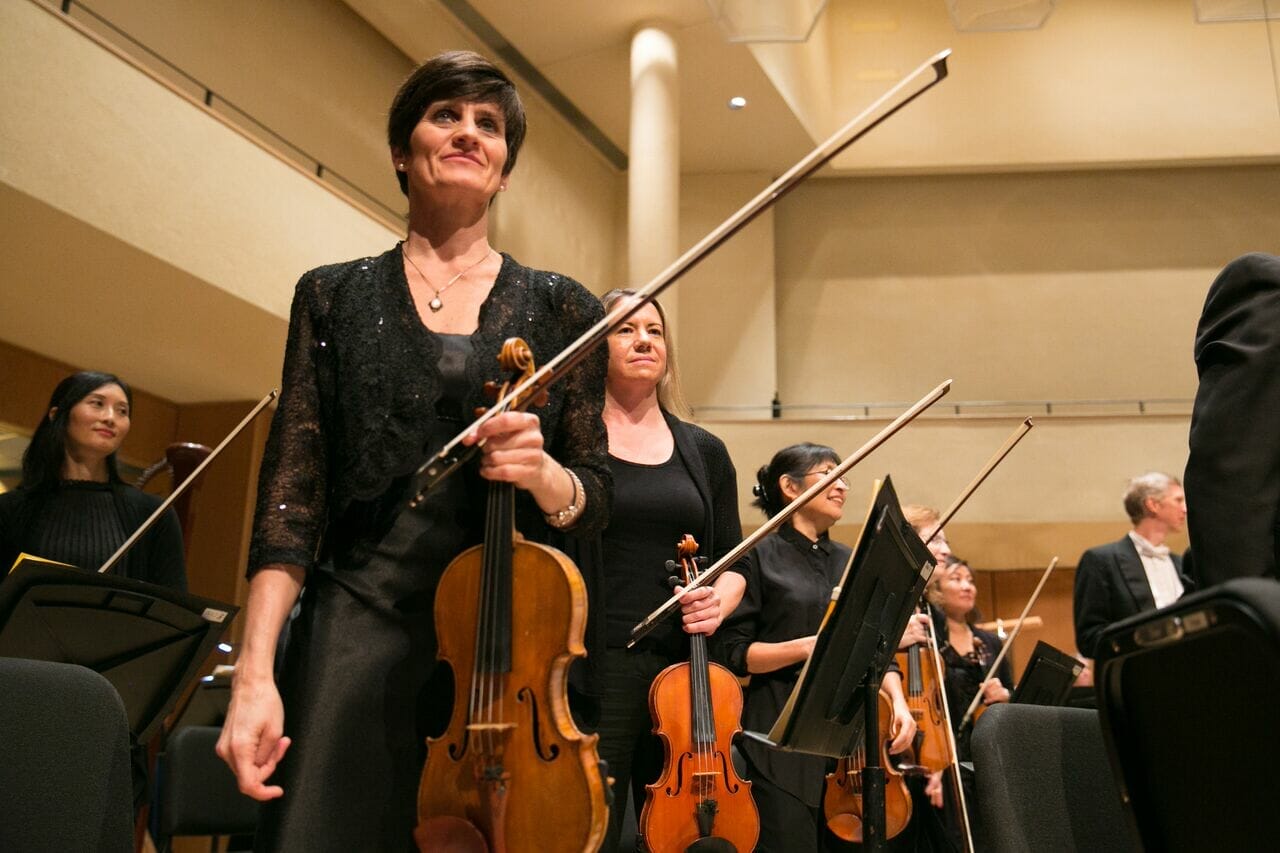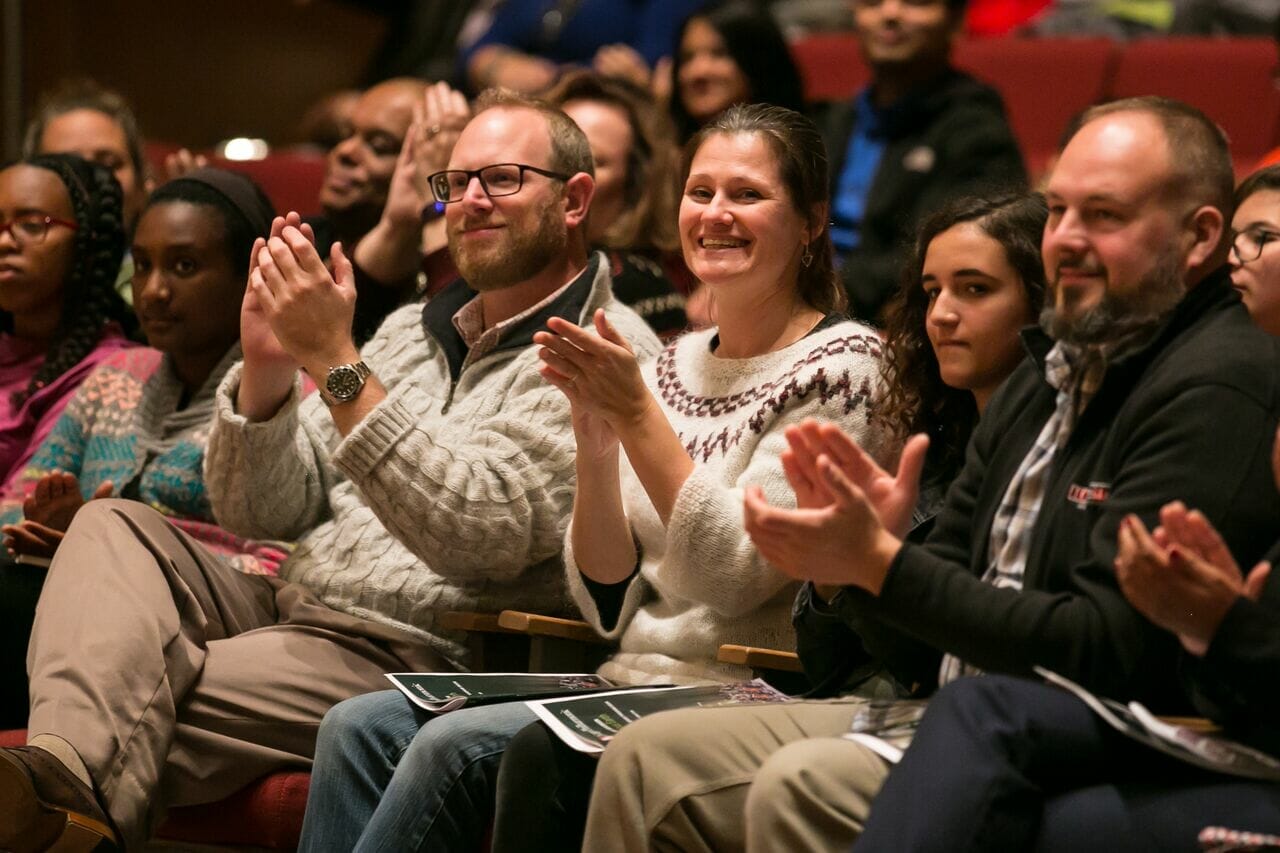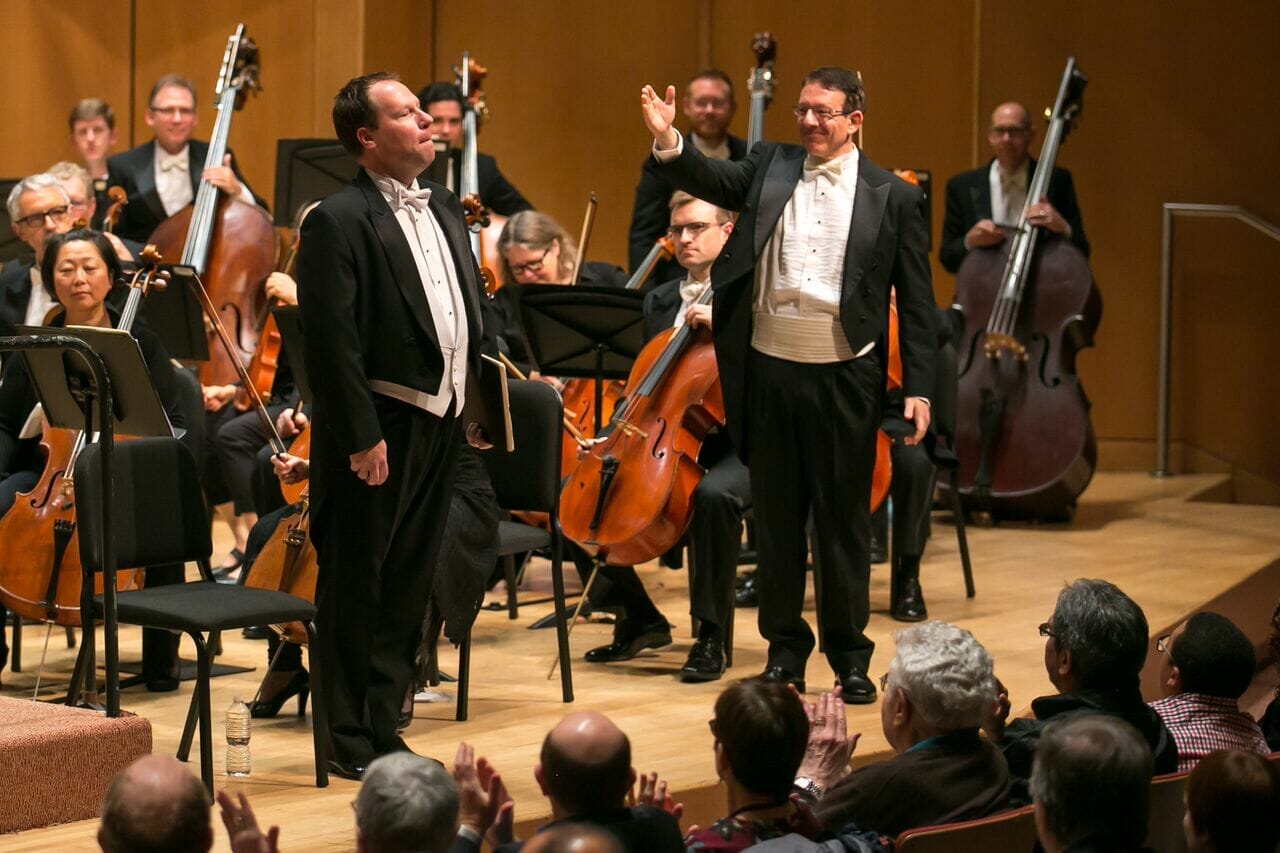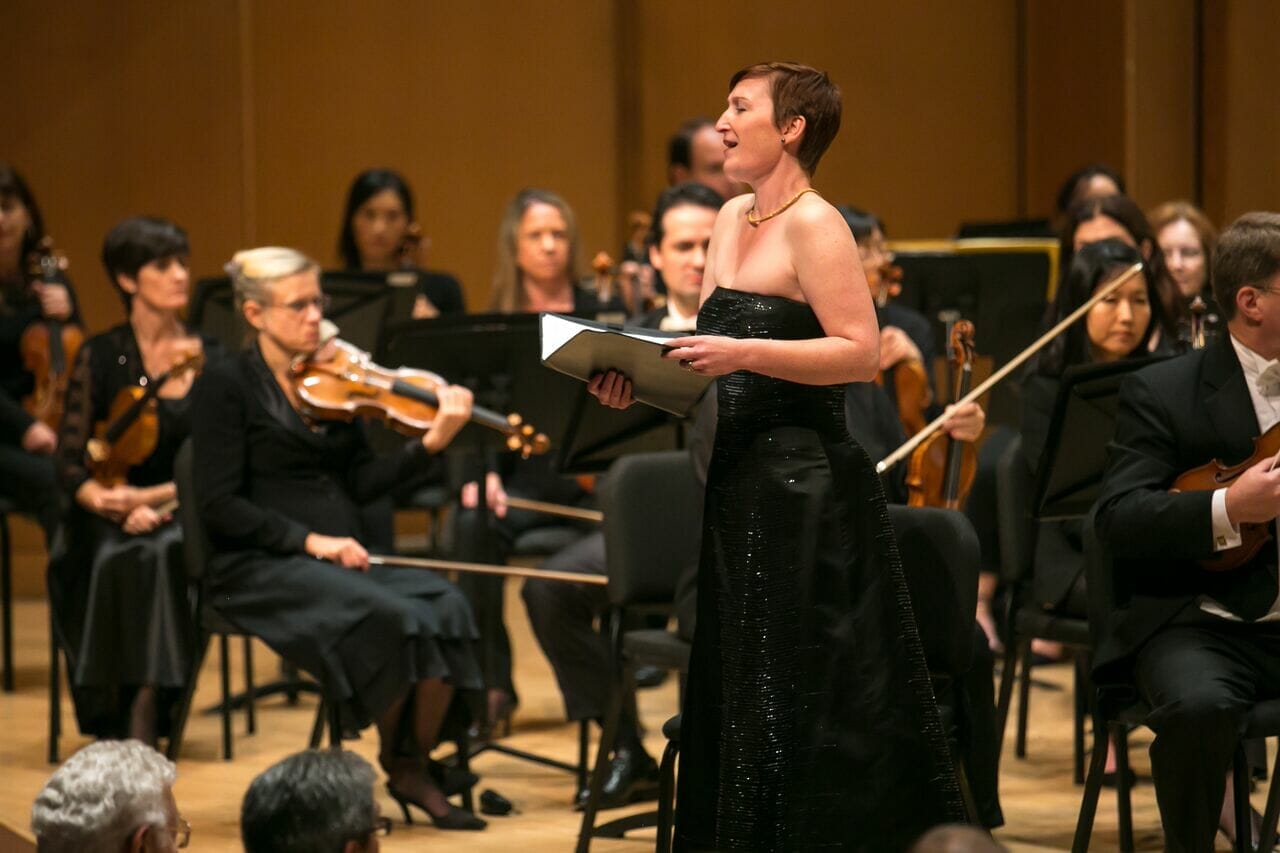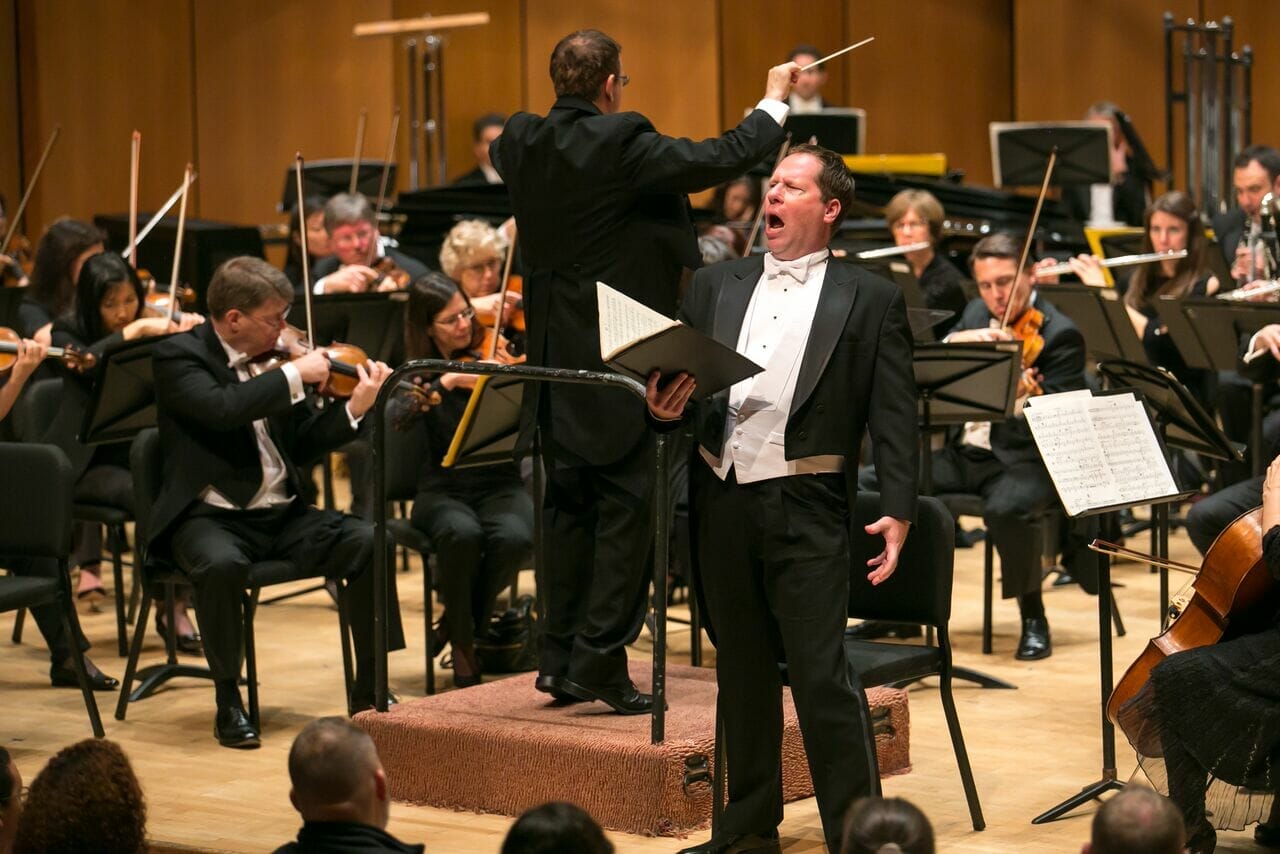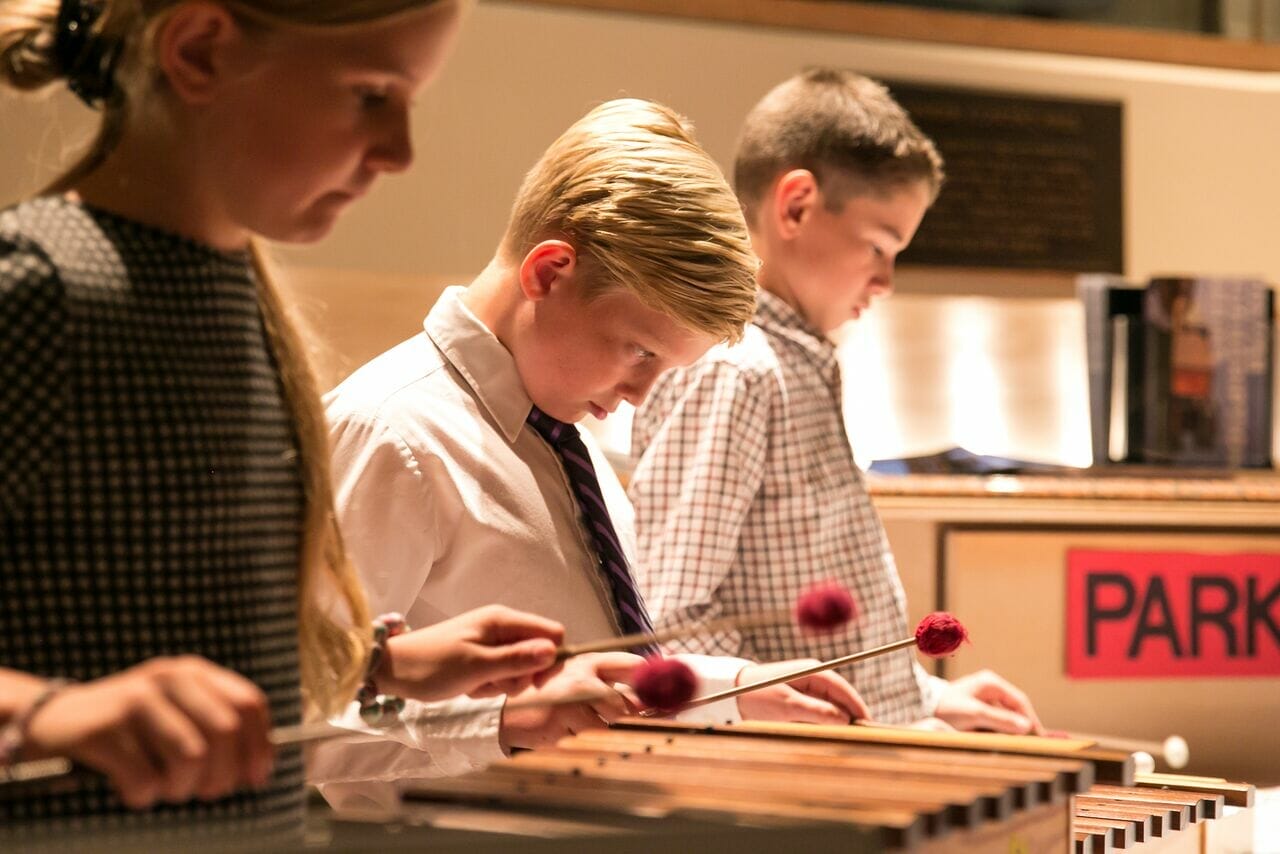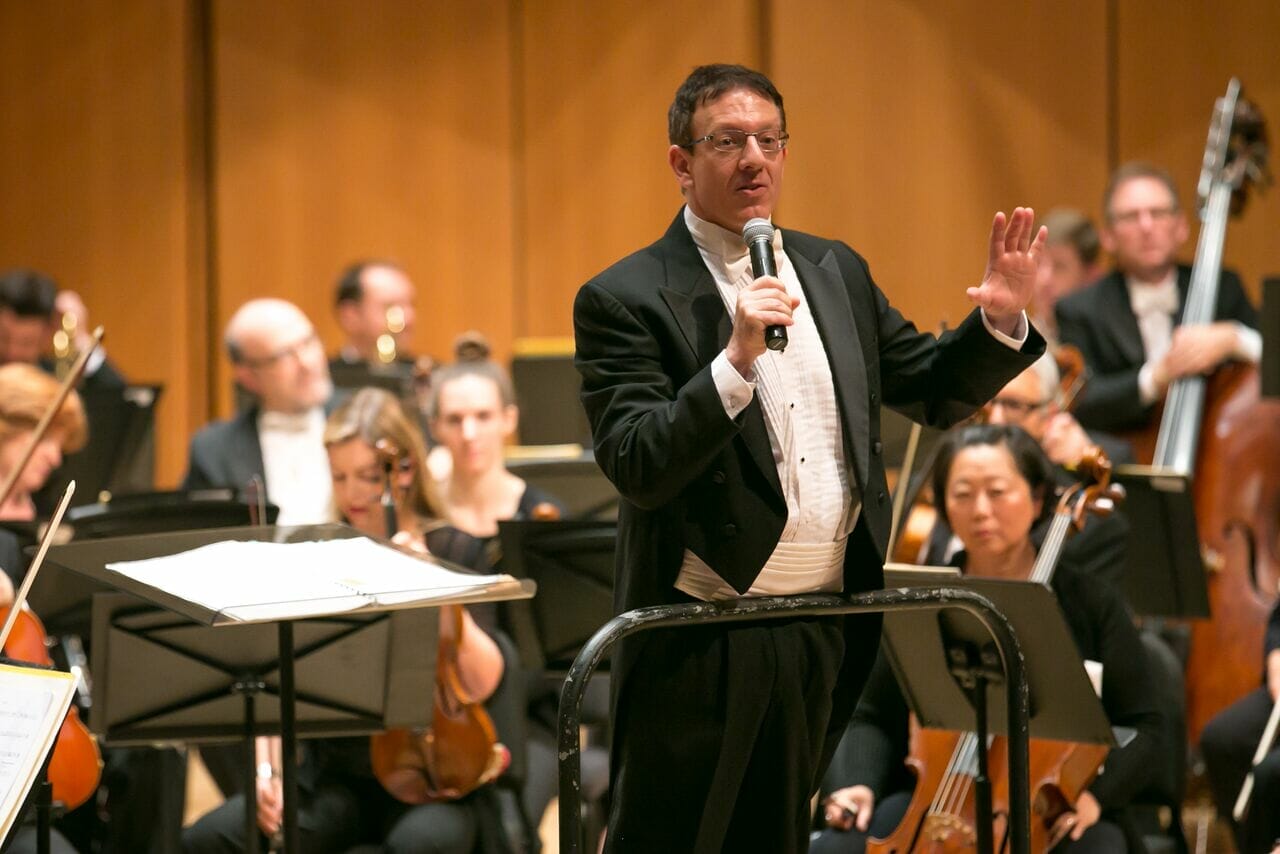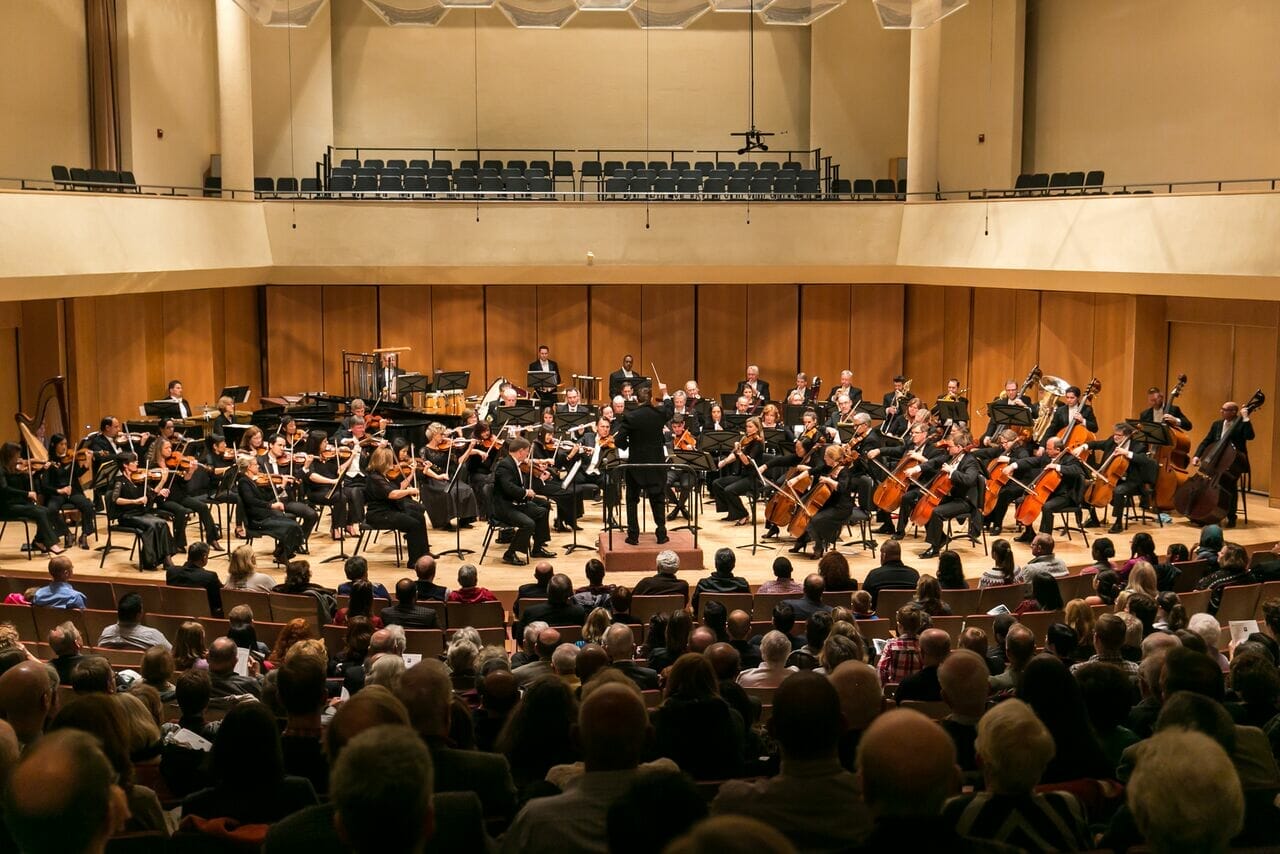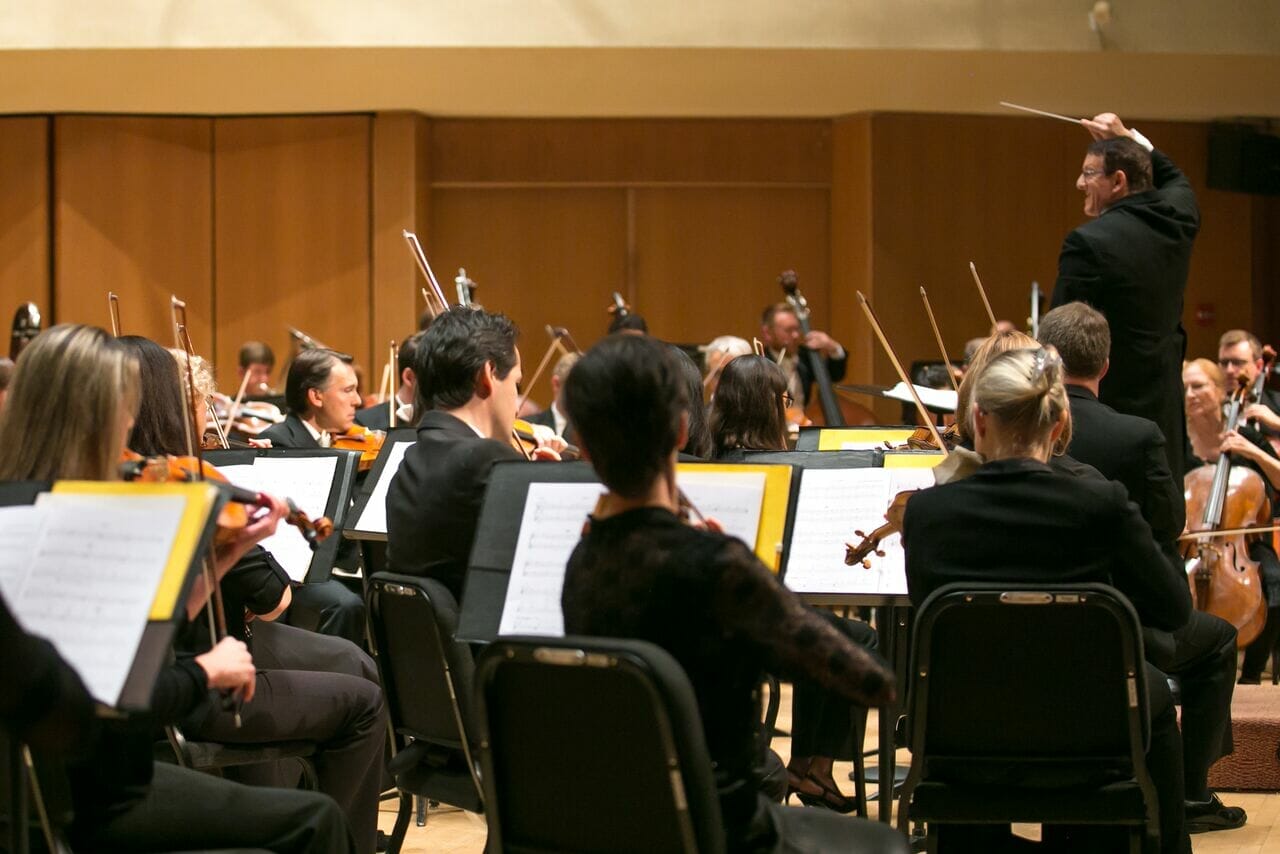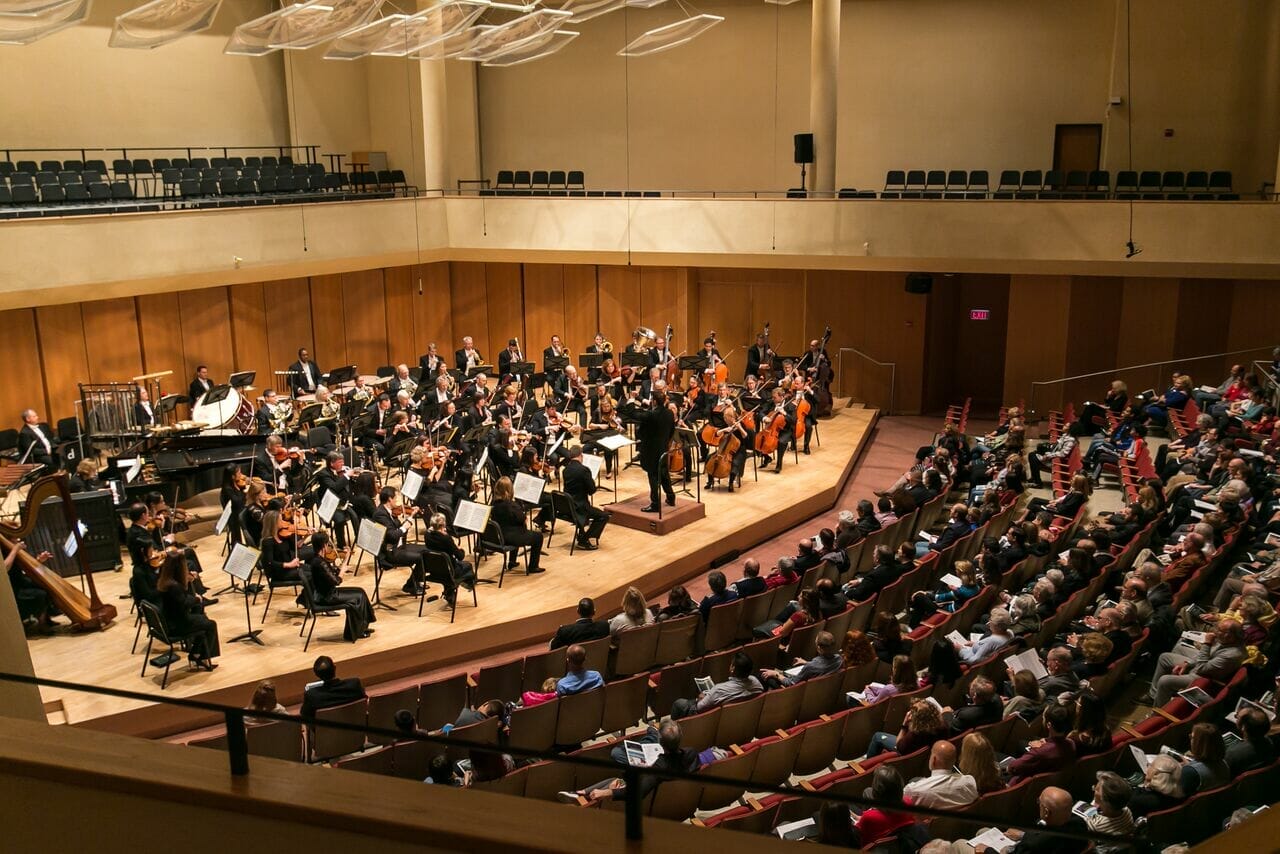This orchestra, the Chicago Philharmonic, not to be confused with the Chicago Symphony, is made up of top Chicago area freelance players, including some Lyric Opera orchestra and Grant Park Symphony players. They performed the first of 6 programs for this season, this one with a theme of Body and Soul at Pick-Staiger Concert hall, on the lakeshore campus of Northwestern University.
Body and Soul is appropriate as a theme because all three musical works:Carmina Burana, by Carl Orff, The Firebird Suite, by Igor Stravinsky, and Rainbow Body, by Christopher Theofanidis, illustrate glories of both exalted spiritual love as well as carnal desire.
Chicago Philharmonic opens with RAINBOW BODY
The first piece, Rainbow Body (2001), draws ancient music and ideals from medieval Catholic nun, composer and mystic Hildegard von Bingen (1098-1179). She wrote much chant melody and the one chosen by Mr. Theofanidis is “Ave Maria, o auctrixvite” (“Hail Mary, source of life’). Played first in unison by the entire string section minus basses after a mood-setting introduction, it comes back throughout the composition. The composer says, “In the orchestration, I try to capture a halo around this melody, creating a wet acoustic by emphasizing the lingering reverberations one might hear in an old cathedral.”
The piece gradually adds more complexity and heightened glory, growing into a 21st century sound and style throughout and ends satisfyingly with a grand, uplifting chord. The composer also says “the work’s title is drawn from the Tibetan Buddhist notion that when an enlightened person’s physical body dies, his or her soul rejoins the universe as energy.” Thus the appropriateness to include in this Body and Soul concert.. It was truly uplifting and glorious, and just the right length.
THE FIREBIRD!
The second piece, The Firebird, a concert suite for orchestra (1919), portrays an ancient Russian fairy tale about the mythical firebird, a large flying bird so full of energy it is on fire. The conductor, Scott Speck, shared the story of the Firebird with us in the audience before playing it. Originally portrayed as a ballet, the tale promises that anyone who can capture the bird, or even a feather, can call on the firebird’s powerful help whenever needed in the future, and the firebird will come and bring victory and help. The story is that Prince Ivan had that experience when trying to free a band of princesses under the spell of the evil magician Kashchei, and the firebird does show up and save the day when Prince Ivan waves the feather he got from the Firebird.
Musically, the orchestra successfully and wonderfully drew us into the story. Stravinsky had used both exotic new 20th century harmonies as well as simple old Russian folk melodies to invoke the mood and excitement of the story. When the part of the storywhen evil Kashchei becomes enraged that he’s about to lose his princesses started, the orchestra began that movement so loud that people in the audience jumped and laughed in surprise.
Conductor Speck told the story twice – first with words and then more excitingly with the music. Among the perfect and evocative solos, the oboe, played by Anne Bach, the bassoon, played by Lewis Kirk, and the horn soloist Steven Replogle, bringing on the victorious conclusion, were just right and continued the mood of the story throughout to the end.
CARMINA BURANA
After the intermission, the orchestra was enhanced with huge forces: a large adult choir – the Apollo Chorus of Chicago, then a wonderful youth choir – Evanston Children’s Choir, and male and female adult soloists. Continuing the Body and Soul theme, Carmina Burana is an ancient collection of 13th century German poemsabout the joys of spring, carnal love, drinking, and the hard question of fate.Though they were found in a Bavarian monastery, Carl Orff (1895-1982) set the 24 epic poems to fresh, sensual, interesting music, and each of the 24 poems received an entertaining and sometimes humorous treatment by the orchestra and singers.
One of the poems, about a swan (portrayed by bassoonist Lewis Kirk) being roasted for a dinner laments how she used to be so beautiful on a lake but now is burnt black and ruined. Another one is about life in a tavern. It lists every type of person who drinks too much and gambles their clothes and life away, but ends up accusing the people who scold them of making the drinkers destitute.
But the beginning and ending poems are portrayed in famous music you may have heard in various commercials. The poems portrayed are loudly complaining how cruel and unfair Mistress Fortune (O Fortuna!) treats everybody. “Fate – monstrous and empty, you whirling wheel, you are malevolent, well-being is in vain and always fades to nothing.” The idea of the wheel of fortune is the medieval philosophy of seeing life as a great wheel all people, families and nations are attached to some part of. Some are at the top, the best part of life, some getting squashed under the bottom. Many are either rising to joy or falling down on the other side after the joy. It makes you think, especially when portrayed so dramatically and entertainingly by the great Chicago Philharmonic and company.
Information about how to get tickets, and learning about future Chicago Philharmonic concerts may be found at the Chicago Philharmonic website. The next concert is Sunday, November 12, 2017 at the Harris Theater.
Photos: Elliot Mandel
About the Author:
Mark Lindeblad is a working pianist and bassoonist in Chicagoland. He received the Bachelor's of Music performance degree, bassoon major, piano minor from Wichita State University in 1978 and the Master's of Music performance degree in bassoon from Roosevelt University in 1983 in Chicago. While doing piano accompanying was always happening on the side from high school and college years, it stepped up to be Mark’s primary occupation in the 1990's. Today he is a piano accompanist at Glenbard South High School, and plays principal bassoon in the Southwest Symphony, and also finds time for about 20 private students studying either bassoon or piano. For more information, visit Mark Lindeblad’s website: www.markspianostudio.com

